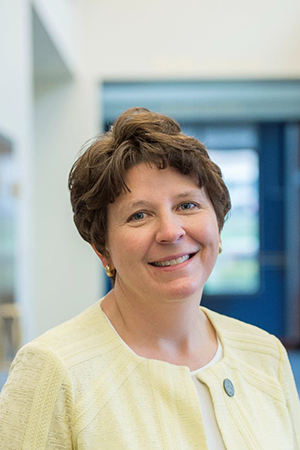Get to know one of the Woodruff School's newest faculty members
August 14, 2023
By Ian Sargent
Carolyn Seepersad recently returned to Georgia Tech, joining the George W. Woodruff School of Mechanical Engineering as a professor in July. Learn more about her time in graduate school at Tech, the courses she’ll be teaching, the focus of her research, and more in the following Q&A.
Welcome back to the Woodruff School! You received your Ph.D. here in 2004. Do you have any fond memories?
My time in graduate school at Georgia Tech was absolutely transformational in terms of its impact on my professional development. The students, staff, and faculty were always so motivating and supportive, and my advisors always encouraged me to think “big,” be bold, and take risks. It was the perfect environment for me for graduate school.
What are some of the big changes you’ve noticed?
The campus itself has become much greener and more inviting; it’s hard to believe that it’s in the middle of a big city. Also, it’s not a change because it’s always been true of Georgia Tech, but there’s a palpable energy on campus. People are so excited about building and advancing everything (the students, the school, technology...).
What courses will you be teaching?
Most likely, I’ll teach a course on rapid prototyping/additive manufacturing this year. In the past, I’ve taught courses on engineering design, additive manufacturing, computational methods for engineering design, and a first-year R&D experience for mechanical engineering students.
What do you enjoy about working in academia?
I absolutely love working with students, and I love working with them to transition exciting new ideas into reality. Whenever I look back on my career to date, I always view my biggest accomplishments as the students I influence, much more than the papers we publish, or the research grants we complete.
What is the focus of your research?
My research focuses on two interrelated topics: additive manufacturing process innovation and design for additive manufacturing, particularly computational methods with an emphasis on interesting applications in the design of structures and architected materials. In recent years, my research portfolio has also included creativity and innovation, and sustainability.
Who are some of your career influences?
My graduate advisors and committee members at Georgia Tech had a tremendous influence on my career. From them, I learned how to do research, how to mentor and guide students, and how to be a lifelong learner who adapts to the changing research landscape. I also owe a debt of gratitude to my colleagues at my former institution, UT Austin, who were fantastic collaborators and established a collegial environment that made it easier for me to thrive. My family has always been incredibly supportive, and I can’t thank them enough.
What breakthroughs would you like to see in additive manufacturing in the next decade?
As an engineering designer at heart, I think the most fascinating aspect of additive manufacturing is how it pushes the limits of our capabilities as engineering designers. The ability to tailor the composition of material, the placement of material, and even the combination of manufacturing processes as part of the design process are incredibly exciting and, at the same time, incredibly challenging. Although additive manufacturing has made significant progress in its ability to reliably fabricate many different types of materials and objects, I’d love to see our ability to tailor materials, spatially grade materials and structures, and fabricate functional and active structures continue to improve, especially our level of control, precision, and repeatability.
What is the biggest challenge of being a new professor on campus?
Having been a graduate student at Georgia Tech and a professor for many years at another university, I certainly have a head start compared to many new professors on campus. When transferring from another university, one of the biggest challenges is learning new ways of doing things and new terminology for different aspects of the research and teaching enterprise, but it’s also lots of fun because it forces you to be adaptable and think in new ways.
What do you enjoy doing for fun?
My family and I love to travel. We also enjoy hiking, and walking, especially when we can take our greyhound along with us. I personally enjoy cooking and gradually expanding my portfolio of recipes, and I recently began learning to play golf (but I’m not very good, yet).

